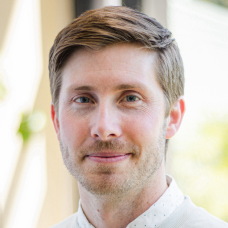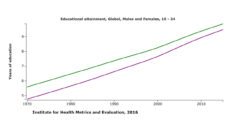As defined by the U.S. Department of Health and Human Services’ Healthy People 2030 framework, social determinants of health are “the conditions in the environments where people are born, live, learn, work, play, worship, and age that affect a wide range of health, functioning, and quality-of-life outcomes and risks.” Access to food, housing, education, and economic opportunity can have profound impacts on our health, regardless of our interactions with the hospitals, clinics, doctors, and nurses who comprise what we traditionally identify as “health care.” Because of this, health care systems are starting to recognize that what happens within their walls only accounts for a small fraction of improving the overall health of their patients.
This relationship became particularly relevant to Intermountain Health in 2016, when the Affordable Care Act (ACA) imposed new criteria for health care systems to maintain their non-profit status. Originally founded as a network of 15 hospitals by the Church of Jesus Christ of Latter-day Saints, Intermountain Health was established as an independent, secular, non-profit organization in 1975 with the mandate to become a “model health care system.”
Today, Intermountain is still based in Salt Lake City, Utah, but it has grown to 33 hospitals and 385 clinics in seven states across the intermountain west. Having changed our mission statement in 2014 to “Helping people live the healthiest lives possible,” Intermountain’s goal of focusing on value-based care — and not simply the fee-for-service reimbursement model — aligned with the ACA mandate. As a result, addressing social determinants of health became part of the organizational strategy to make the communities around us healthier.
In 2018, we launched a $12 million demonstration project called the Utah Alliance for the Determinants of Health (the Alliance). We partnered with the Children’s Hospital of Philadelphia Policy Lab and two counties within Utah to explore how a health care system could co-produce interventions including social needs screenings and coordinated referrals to existing community organizations. From this work, we also identified several key areas where a health system might be able to affect positive change in the local community.
As a health care system mission-driven to deliver health rather than health care, we hope that addressing these factors as part of our long-term strategy pays off in the long run for everyone in our communities.
First, we recognized that, by being deliberate about our own supply chain and local spending, we could support local businesses and job creation. Evaluating our own accounts, we realized that we were only contracting with large, national brands rather than local vendors because they could prove that they had the capacity to meet the volume of goods required by large medical centers. Through a series of candid conversations with local vendors about the barriers keeping them from engaging with us, we discovered that changes in our contracting process could enable smaller outfits to grow to a scale that met our health system’s needs.
For example, a local coffee roaster had insufficient capacity to fulfill one hospital’s orders, yet lenders refused to extend them a business loan to expand their operation without a contract in hand. We created a new process to extend a contingent contract to the company, and they were able to successfully secure additional capital to grow and become one of the health system’s core food and beverage providers.
Second, several factors enabled Intermountain to take action on housing insecurity. Lessons learned from the Alliance aligned with a growing body of literature surrounding the importance of stable housing in affecting health. We also recognized that several community organizations already had decades of collective experience in the local affordable housing arena. This opened an opportunity for impact investing. Compared to traditional investing, where the main objective is maximizing financial returns, the goal of impact investing is twofold: to create social benefits in addition to financial ones. Instead of becoming developers or landlords ourselves, we could finance community partners who were already doing the work but limited by funding.
We joined a coalition of other organizations, such as the Clark and Christine Ivory Foundation, Zions Bank, and an affordable housing development group called the Utah Non-Profit Housing Corporation (UNPHC), to launch the Utah Housing Preservation Fund (UHPF). As affordable rental units age, many are sold on the open market to commercial developers who turn the buildings into luxury housing. The UHPF is able to compete in this environment by purchasing some of these properties, making necessary renovations, and preserving the units within the affordable housing supply.
Looking to the future, our strategy for addressing social determinants of health continues to evolve. But, as a health care system mission-driven to deliver health rather than health care, we hope that addressing these factors as part of our long-term strategy pays off in the long run for everyone in our communities.
Photo via Getty Images

















